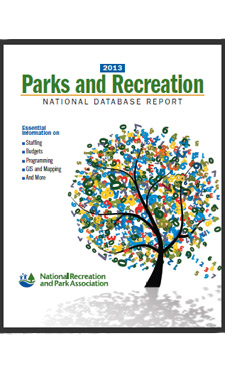 (Editor's Note: The below text is an introduction to the 2013 Parks and Recreation National Database Report, which provides in-depth analysis on the findings of PRORAGIS over the past three years. The report relies heavily on charts, graphs, and visuals, which can be found in the original document. Please reference the complete document, linked above, for full understanding.)
(Editor's Note: The below text is an introduction to the 2013 Parks and Recreation National Database Report, which provides in-depth analysis on the findings of PRORAGIS over the past three years. The report relies heavily on charts, graphs, and visuals, which can be found in the original document. Please reference the complete document, linked above, for full understanding.)
The Community Value of Parks
For parks to have a community value they must benefit users and non-users alike. A quote from John Crompton, Ph.D., Professor Emeritus, Texas A&M University, succinctly summarizes this concept: “If the paramount needs of a majority of residents are not met, the field does not deserve their support. Such widespread community support will be based primarily on the off-site benefits that accrue to nonusers rather than on the on-site benefits that accrue to users.”
Among the many responsibilities of professional park and recreation leaders is the need to continually examine and communicate the value of the parks system to their community. NRPA’s PRORAGIS database is a tool that is designed and administered to assist in that effort. Since its inception, NRPA has invested significantly in improving PRORAGIS and expanding its capabilities to serve the parks and recreation community. Most recently, we added the Eco-Benefit Calculator in 2012, a tool that adds yet another dimension in presenting the community value of local park systems. Its release comes after a three-year data collection effort, which we are now using to develop an initial trend analysis.
This 2013 Report marks the first year that PRORAGIS can be used to establish industry trends. Three years of data are required and we now have well over 1,000 profiles distributed across the 2010 to 2012 reporting years. Thus this report focuses on the significant trends affecting your operations and management. These trends are national in nature and may not be reflected in your location, but they can still give you insight to the state of the industry.
The system, which relies on agencies to supply their own data through a survey, is still in its early stages, but it offers an informative look at the functions, structures, and budgets of more than 300 agencies of various sizes, types, and regions.
Learn how you can use Park Metrics to benefit your agency.
2013 Parks and Recreation National Database Report
January 1, 2013, Feature, by National Recreation and Park Association

